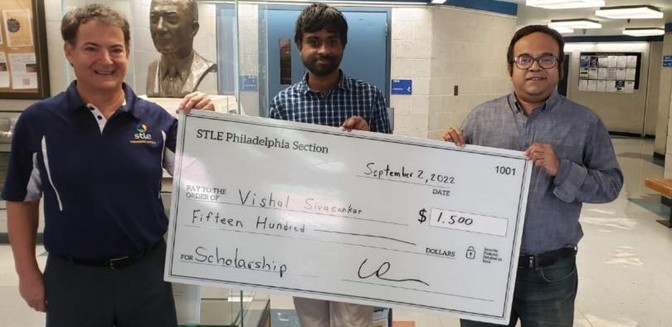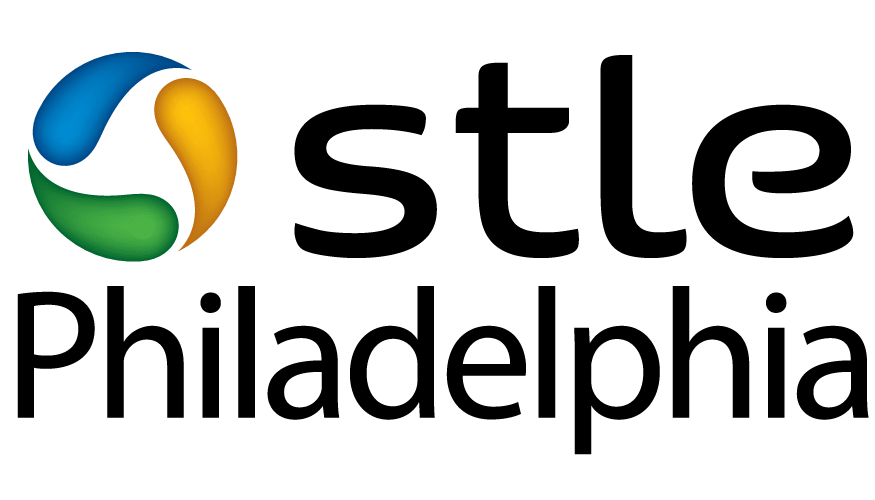
The Philadelphia Section of the STLE is pleased to award University of Maryland graduate student Vishal Sivanskar a $1,500 scholarship. Sivanskar is pursuing a PhD in mechanical engineering working in the lab of Professor Siddhartha Das.
In his research, Sivanskar modeled the behavior of a non-Newtonian liquid drop under conditions akin to that present in a UV-light based 3D printing process using Computational Fluid Dynamics (CFD). This work provided the first-ever model to capture the simultaneous dynamics of a spreading drop coupled with the thermo-solutal response of the drop due to the incident UV light. The model showed distinct differences in the drop velocity, drop temperature, and dynamics of the contact line arrest (curing profile) depending on the polymerization rate-dependent material behavior. To further understand drop behavior in 3D printing, he probed the effect of impact velocity on the coalescence behavior of non-Newtonian droplets. This work shed light on the post-deposition kinetics of drops seen in typical 3D printing processes like inkjet printing and was recently published in the journal Langmuir. Currently, he is using CFD simulations to probe the effect of substrate vibration on contact line dynamics.
Besides his contributions related to the CFD simulations of drop dynamics, Sivanskar has significantly contributed to the group’s continuum-based polymer physics research. He contributed to the development of the first thermodynamically self-consistent model for planar polyelectrolyte brushes with the effects of excluded volume interactions and an expanded mass action law. This was published with Sivanskar as co-author. Srinivanskar also contributed to many semi-analytical continuum-based studies of various electro-kinetic flows, including pressure-driven flow, electroosmotic flow, diffusion-osmotic, and thermo-osmotic flows in polyelectrolyte brush grafted nanochannels. The most significant finding in these studies is that, contrary to the contrary to popular belief, the presence of charges on the backbone charged polyelectrolyte brush significantly enhanced the fluid flow inside the nanochannel. He has co-developed one of the first theoretical thermodynamically self-consistent frameworks for polyelectrolyte brushes that accounts for excluded volume effects and other non-Poisson Boltzman effects like ion-ion correlations, ion-size effects, and solvent polarization.
Sivanskar’s research productivity is shown by the fact he has sixteen peer-reviewed publications with seven as lead author. He also takes an active role in the group mentoring new graduate students.
